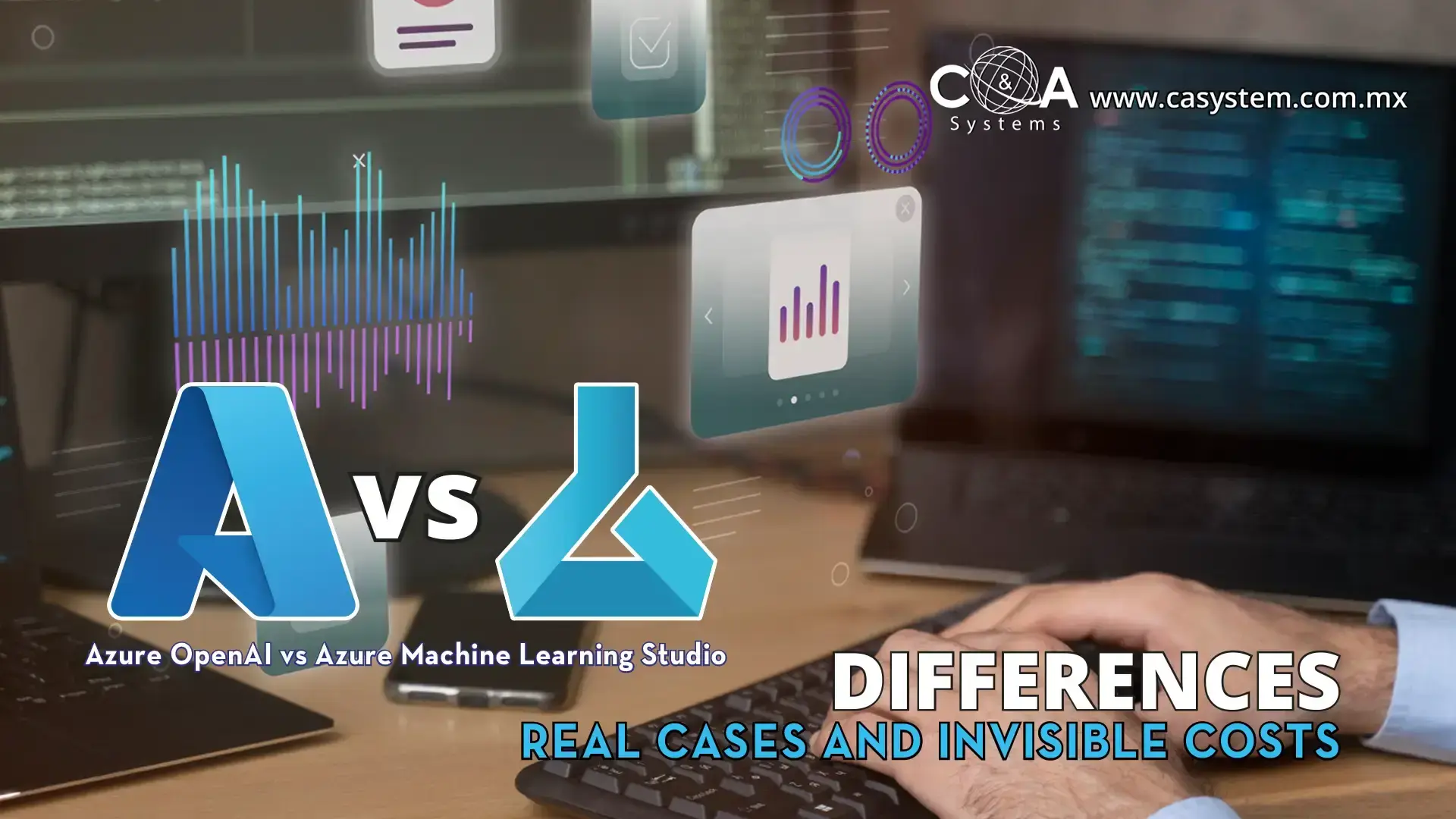Azure Services for Advanced Security with Azure Sentinel
Introduction: Topic – Real-time Threat Detection, Investigation, and Response in the Banking Sector
1 min read
IRIS MONSERRAT : Nov 21, 2025 9:47:19 AM

Introduction:
Case Study: Azure OpenAI vs Azure Machine Learning Studio – Differences, Real Cases, and Invisible Costs
“Many organizations have Azure credits or plans enabled with AI services, but they don't activate a single one. Worse yet: they confuse OpenAI with Machine Learning Studio and waste their potential.”
Context
A technology company with an Azure Enterprise Agreement (EA) subscription wanted to develop artificial intelligence-based solutions for legal text analysis and risk prediction. The technical team did not know whether to use Azure OpenAI Service or Azure Machine Learning Studio, so they tried to use both... doubling consumption and getting no clear results for two months.
Furthermore, the finance team noticed an unexpected increase in costs due to model inferences without monitoring or configured limits.
| Feature | Azure OpenAI Service | Azure Machine Learning Studio |
| Model Type | Pre-trained LLMs (GPT-4, Codex) | Custom ML Models |
| Ideal For | Chatbots, summarization, NLP classification | Predictive models, regression |
| Proprietary Training | No (usage via prompt) | Full Training |
| Interface | API + playground (easy to use) | Visual Studio + notebooks |
| Cost per Use | Tokens/Inference | Computational resources (vCPU, RAM) |
| Enterprise Security | Azure Trust Center + RBAC | Fully integrated |
Implemented Real-World Use Cases
Azure OpenAI Service
Azure Machine Learning Studio
Usage of OpenAI endpoints without token control (long prompt + high temperature).
Unnecessary ML Studio training runs left active for days.
Non-utilization of reserved instances or proper sizing (dimensioning).
Lack of awareness regarding free credits available through licensing or CSP programs.
65% reduction in monthly costs by defining scaling and monitoring rules.
AI security and governance implemented under Azure AD policies and sensitivity labels.
Acceleration of Proofs of Concept (PoCs) to 1 week using OpenAI (without training models from scratch).
Increased understanding by stakeholders of the differences between generative vs. predictive AI.
OpenAI and ML Studio do not compete: they complement each other depending on the problem you want to solve.
Without cost control for tokens or CPU, AI can become unsustainable.
Measuring, labeling, and automating AI governance is part of technical and financial success.
Taking advantage of Azure credits requires activation, not just subscription.

Introduction: Topic – Real-time Threat Detection, Investigation, and Response in the Banking Sector

Improve the Security of Azure DevOps Deployments Introduction “Avoid having a failure or test in development impact the production environment.”

Introduction